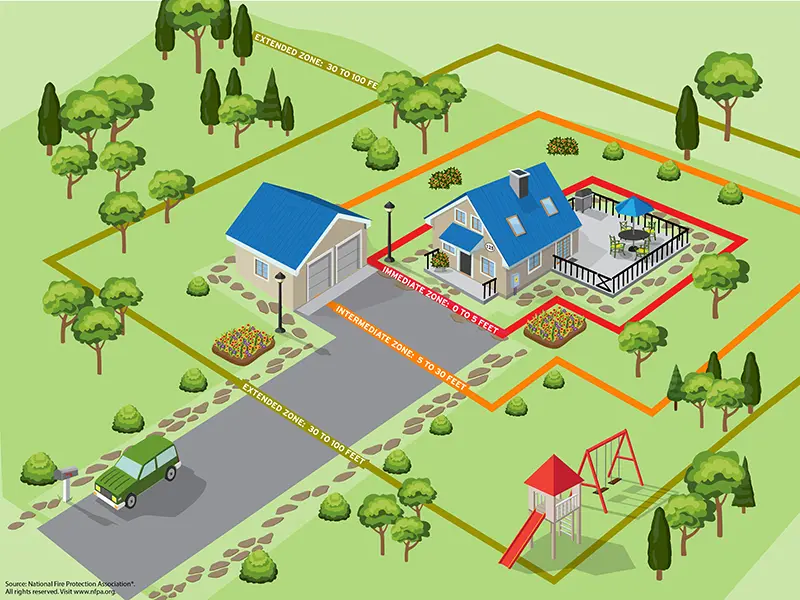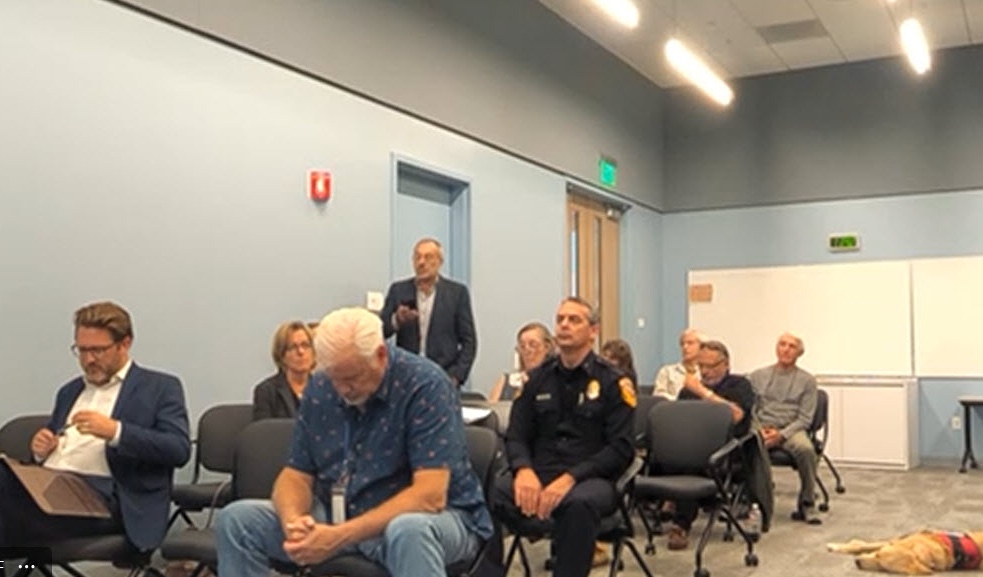By Christophe Marcant, OFSC Board Member
On August 18th, the Board of Forestry and Fire Protection convened a hearing in Sacramento to receive public comment on the proposed Zone 0 regulations. This discussion about wildfires focused on something as simple as the area just outside our front doors — the first five feet.
That strip of ground, officially called Zone 0, is the most dangerous real estate in a wildfire. It’s where windblown embers — which can travel miles ahead of flames — decide whether a home ignites or survives. Decks, mulch, wooden fences, and patio furniture too close to walls often make the difference between loss and survival. Scientists call it “the ember ignition zone.” Firefighters call it the bullseye.
Representatives from the Oakland Firesafe Council were in attendance, monitoring the hearing to keep our community informed about emerging wildfire policy. Our council was born from the aftermath of the Tunnel Fire, a disaster Oakland remembers all too well. In 1991, it tore through our hills in just a few hours, destroying nearly 3,000 homes, killing 25 people, and displacing tens of thousands more. Entire neighborhoods were reduced to ash — not just from walls of flame, but from windblown embers landing on rooftops, fences, and yards. The lesson is seared into our history: when embers find receptive fuel close to a house, devastation follows.
The Case for Zone 0: Lean, Clean, and Green
Supporters lined up early. Firefighters, fire marshals, Firewise leaders, and insurance representatives brought hard science and real-world experience:
- Fire professionals described firelines where one house burned to the slab while the neighbor’s survived — the only difference being five feet of defensible space.
- Homeowners with stories shared how compliance saved not just homes but money: One San Diego homeowner described spending ~$7,700 on compliance and receiving an $1,800 insurance discount, a 3.5-year payback.
- Community leaders asked for the state to backstop local action. “I’m the good cop with my neighbors,” one Firewise coordinator explained. “I need the state to be the bad cop.” Clear, enforceable rules, they argued, don’t just reduce risk — they empower communities to overcome inertia and misinformation.
The message from this camp was consistent: Zone 0 isn’t theory. It’s a tested, affordable intervention that saves homes and lives.

The Pushback: Costs, Canopies, and Control
Opponents weren’t dismissing fire risk; their arguments were grounded in personal and local concerns. Homeowners, environmental advocates, and neighborhood association leaders voiced three main worries:
- Financial strain: Seniors and families on fixed incomes described thousands of dollars in trimming and landscaping bills they can’t absorb.
- Environmental trade-offs: Removing trees and shrubs, they argued, could worsen erosion on steep slopes, reduce biodiversity, and remove shade that naturally cools homes in increasingly hot summers.
- Uncertain enforcement: Several speakers worried that penalties could be heavy-handed — with some even warning about misdemeanor-level treatment — though final rules on enforcement haven’t been determined.
A Los Angeles advisory committee chair put it bluntly: “Southern California’s canopy isn’t the Sierra. One brush doesn’t fit statewide.”
The Divide: Data, Dollars, and Doubts
- In favor: Firefighters, insurance professionals, and community fire leaders. Their arguments leaned on science, case studies, and safety outcomes.
- Against: Individual homeowners and activists. Their testimony emphasized financial hardship, ecology, the cooling benefit of shade, and concerns about how penalties might be applied.
The pattern is clear: those charged with protecting the community overwhelmingly back Zone 0, while those facing the immediate costs remain wary.
The Stakes: History, Equity, and Oakland’s Future
For us in Oakland, the lesson is personal. The Tunnel Fire proved that embers don’t just threaten — they devastate entire neighborhoods. Zone 0 addresses that exact vulnerability.
- Zone 0 is the frontline. Every study, every firefighter, every survivor repeats the same truth — embers start at the foundation. The first five feet determine whether we rebuild or return home after a fire.
- Equity and clarity are key. Residents aren’t rejecting science; they’re worried about affordability, shade, and fairness. If the state sets a clear standard, local councils like ours can focus on education, support, and helping neighbors get it done.
The Oakland Firesafe Council will continue to be present at these hearings, knowing the stakes are nothing less than neighborhoods saved, insurance rates stabilized, and families spared the trauma of loss.
The committee will reconvene in Los Angeles on September 18 to take further public comments, with plans to finish their work the following week and submit the regulations for adoption. The schedule is not optional: Governor Newsom’s Executive Order N-18-25, signed in February, directs the State Board of Forestry to complete Zone 0 rules by the end of the year.
Oakland has already lived through one Tunnel Fire. Zone 0 is our chance to make sure we never live through another.
Meeting Recording: Zone Zero Regulation Advisory Committee Meeting 08-18-2025


